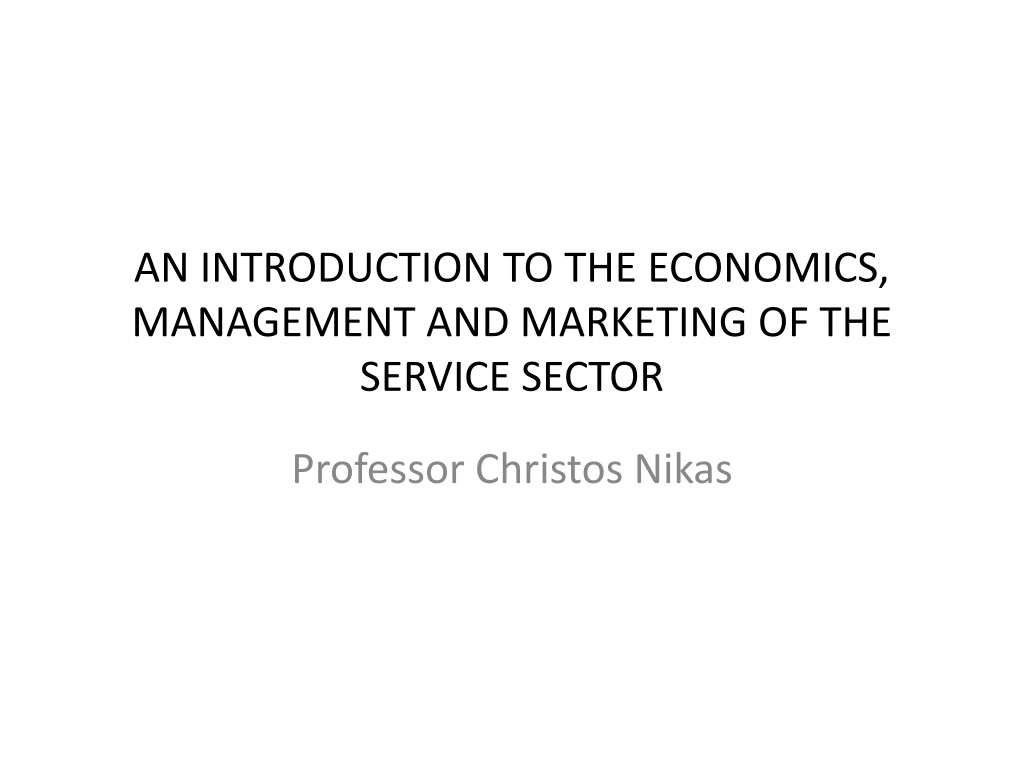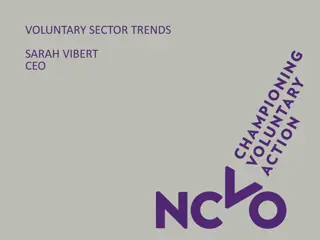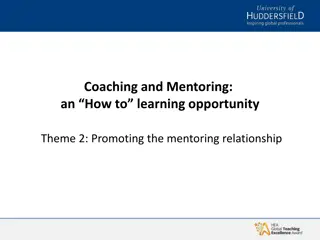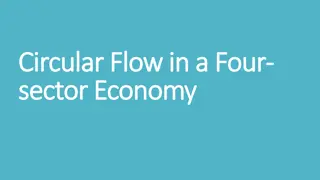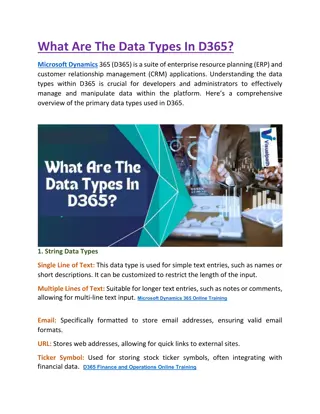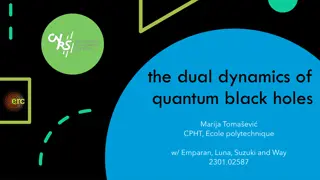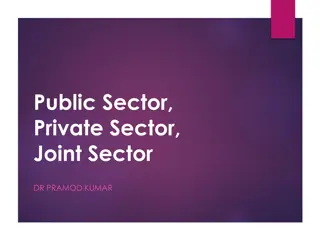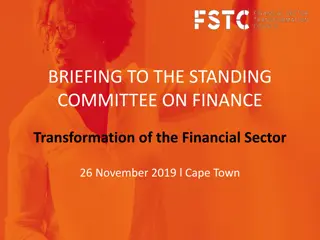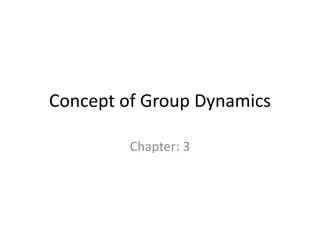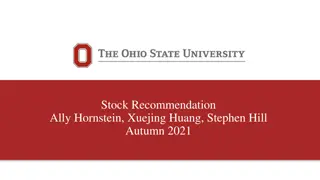The Dynamics of the Service Sector
Explore the realm of services in the context of economics, management, and marketing with a focus on defining services, the challenges faced by service providers, and the classification of services. Learn the key differences between goods and services, and the shift of the global economy towards the service sector. Understand the intangible nature of services and how they add value to consumers' well-being.
Download Presentation

Please find below an Image/Link to download the presentation.
The content on the website is provided AS IS for your information and personal use only. It may not be sold, licensed, or shared on other websites without obtaining consent from the author.If you encounter any issues during the download, it is possible that the publisher has removed the file from their server.
You are allowed to download the files provided on this website for personal or commercial use, subject to the condition that they are used lawfully. All files are the property of their respective owners.
The content on the website is provided AS IS for your information and personal use only. It may not be sold, licensed, or shared on other websites without obtaining consent from the author.
E N D
Presentation Transcript
AN INTRODUCTION TO THE ECONOMICS, MANAGEMENT AND MARKETING OF THE SERVICE SECTOR Professor Christos Nikas
UNIT 1: INTRODUCTION TO SERVICES Objectives After completing this unit you will be able to: define a service and understand the difficulties involved in doing so discuss the growth of services within the world economy understand the difference between goods and services realise some of the broad problems facing service providers understand the many different types of service and the different classification systems
Introduction In recent decades, the world economy has tended to shift away from manufacturing towards the service sector. Given that managing services is not the same as managing goods and manufacturing industries, this unit will explore the main differences between goods and services. We will seek to highlight some of the particular problems which face the service manager and consider the importance of services. Finally, we will look at how services can be classified depending on their type and market.
What is a Service? A service is an offering to the consumer which adds value to their property, belongings, physical state of psychological well-being. Many people think that services are not products but in fact they are. Products can be divided into those things which are tangible, known as goods, and those things which are not tangible, known as services. For example, services would include transportation, communications, distribution, financial services, education, medical services, professional services, travel and tourism. However, it can sometimes be difficult to decide if something is a good or a service. A computer is a manufactured good when it is sold as a personal computer to a household, but if it leased to a business it becomes a service.
Service Definition Many people have tried to define services and the most common definitions include the word intagible. This means that the service cannot be touched, felt or seen and after it has been performed the customer does not actually own anything. However, services can be tied to a physical outcome. For example, you may go to the dry cleaners and have some clothes cleaned. This is a service, but you have physical evidence of it in that your clothes now look much better. Two other key factors used in service definitions are that a service is actually a performance and it is something which is experienced. In order to understand services we need to examine the area of tangibility and intangibility more closely.
Tangibility and Intangibility Intangibility describes the fact that a service cannot be physically handled. Generally a service cannot be seen, tasted or touched. There may be elements surrounding the service which are physical, but these are extensions to the pure service element. Every product has some degree of intangibility, be it a good or a service; the point is that a service has a much higher degree. For example, let us look at a Porsche car. Many people who wish to own a Porsche do so because of its intangible elements, such as status and image. These are also known as subjective benefits. Also important are the tangible elements, such as the engine, luxurious interior and design features. These are the objective benefits. No-one would dispute that a Porsche was a tangible good, but it does
We can also consider a stereo system, which initially may be thought to be a prysical good. However, there are many elements apart from the size, style, features and so on, which the customer will consider during the buying process. These may include quality, reliability, after sales service and guarantee. It is these elements which go a long way in persuading a customer to buy a Bang and Olufsen. Salt Detergents Cars Cosmetics Restaurants Restaurants Airlines Banking Teaching
We can divide the different product offerings a company has into four groups, dependant on tangibility: A pure tangible good. No services whatsoever accompany the product, for example salt or toothpaste. A tangible good with accompanying services this could be a car, which is tangible, plus a warranty and service offer. A major service with accompanying minor goods The main product on offer is a service, such as a flight with an airline. The customers arrive at their destination without anything tangible to show for their expenditure. However, en rout they are given tangible goods, such as food and drink, a magazine etc. A pure service There are no tangible elements, for example a massage or psychotherapy.
The Reasons for the Growth in Services. Services now play a major role in the economies of the Western World, and they are assuming an increasingly important role in the rest of the world. There are many reasons for this: Leisure time trends - the trend is now towards increased leisure time, which gas led to a demand for recreational services. This has also been fuelled by the demand for fitness and health activities. Female participation in the workforce - the changing role of women has led to demands for a whole range of services, from time saving services in tasks such as meal preparation, clothes maintenance and household cleaning to an increase in disposable income, fuelling demands for more relaxation oriented services.
Demographics - for example, the increase in the numbers of elderly people has led to a demand for more health care services. Lifestyle changes - we now live life at a faster pace, so there is a demand for a whole range of services to save time - car washes, computers etc. At the same time, the stress that this type of lifestyle causes increases demand for stress reduction services such as massage, health farms, psychotherapy.
The Difference Between Goods and Services Tthe management of services is not the same as the management of goods and many areas, such as quality and customer care, require special treatment by the service manager. In fact, there are nine major differences between goods and services and these are discussed below. The differences are: intangibility inseparability perishability heterogeneity involvement of customers importance of the time factor quality control no inventories different distribution channels.
Intangibility The fact that the customer has little on which to evaluate the service, in that they cannot inspect it or try it out in advance, makes the selling of a service that much more difficult. The major problem caused by intangibility is that when the consumer cannot view and examine the product before they buy it, they find it difficult to understand exactly what is on offer. When purchasing something consumers rely on search qualities which are those things that can be viewed before you buy, including colour, share, how something works and so on. Experience qualities are those things which can only be assessed after purchase, this would be satisfaction with the product. Finally there are credence qualities which are those things which cannot be evaluated even after the consumer has used the service e.g. the example of having an operation.
Inseparability In the minds of the consumer, those who provide the service are the service. Usually a service can only be used as it is being produced. For example, a haircut is only experienced as it is being performed. This means that the supplier has to be present to sell the product and the customer has to be there to experience it. As a result the customers feeling about the actual service is highly influenced by the person who is performing it. In essence, the way that the service is delivered to the customer is as important as the actual service itself, and the two elements are totally inseparable.
Perishability Services cannot be stored. They cannot be produced ahead of time and then used later when they are required. If they are not used as they are produced then they are lost for ever. For example, many Mars bars can be manufactured and if they are not sold one day they can be sold the next day. However, if all of the airline seats on a flight are not sold, the plane will still fly with empty seats. The dentist who has no appointments for two hours can never fill those appointments after that time - the money earning opportunity is lost. Service providers have to try and manage the demand for their services so that they are working at peak capacity all of the time, and they suffer from unsold seats, or gaps in the appointment book as little as possible. This is obviously a very important area and will be covered later in the text in much more detail.
Heterogeneity It is often difficult to standardise services and offer exactly the same service to everyone. Some areas of service have overcome this problem to an extent. e.g MacDonalds have ensured that their hamburgers taste the same whenever you buy them and wherever you buy them all over the world. However, if one looks at the medical profession, it is impossible to offer a standard service, as every customer is different and has different needs. This whole area of standardisation causes a dilemma for service providers. How to provide efficient, standardised service at an acceptable level of quality, whilst at the same time treating each customer as a unique person? Good service is often translated by the customer as personal service. However, this can cause problems for the service provider, as training for service employees often has to be much more complex, in order that they can learn to cope with a very wide range of eventualities.
Involvement of Customers The customer often plays a major role in the production of services. In many services the customer is actively involved in the service. This can be by actually serving themselves (e.g. in fast food restaurants of bank cash point machines) or by being very involved in the process (such as in hairdressing where they say what style they want and make comments throughout the process). The degree of involvement can influence levels of customer satisfaction and how they feel about the service. Customers are heavily involved in medical provision when they describe their symptoms: if they have been heavily involved in the production of the service, and they are not satisfied with the outcome (the drugs they took to solve their medical problem do not appear to be working, for example),then the very fact of being involved can cause them to blame themselves for the poor result.
Importance of the Time Factor As customers often have to be present for the service to be provided, they have limits as to how long they are prepared to be kept waiting to receive the service. Even when the service operation takes place away from the customer they will have expectations about how long it should take. For example, if you go to buy a television set, you see the one you like and then ask to purchase it. The whole process can take only a few minutes. If however, for a similar amount of money you are flying to Europe, you may be kept waiting several hours, and while you are waiting for your service to be performed, there is little else you can do. The time factor also comes into play whilst queuing for services, such as in the Post Office.
Quality Control Manufactured goods can be checked before they leave the factory, but because many services are consumed as they are produced it is far more difficult to control the quality. The customer is essentially in the service factory and actually involved. No Inventories A service is an act or a performance, so there is no stock held in the back room ready to be used. The necessary people and equipment can be held in readiness, but when demand can be so difficult to predict it is not easy to ensure that there are the right number of people to carry out the service when it is required. Service managers have to work without the aid of inventories and have to balance the areas of supply and demand.
Different Distribution Channels Unlike manufactured goods which have physical distribution channels to move the goods from the factory to the customer, service businesses can use a whole variety of different channels. These can be electronic, as in the case of communications, or else they combine the factory and the retailer into one, as in the case of hairdressers. In this instance the manufacturer finds herself responsible for retailing rather than contracting this out to retail intermediaries. We can see that there are several differences between goods and services, and these will all impact on the way that services are managed. All of these areas will be discussed in greater detail, but let us briefly look at the key problems and potential solutions raised by the first four differences: intangibility, perishability, inseparability and heterogeneity.
The Classification of Services The whole service industry is vast, so it can be usefyl to try to classify services in different ways. Different strategies can then be applied to different types of service. Just as goods are not all the same - in that we have manufactured goods, fast moving consumer goods, high technology goods etc. similarly not all services are the same. There are many different ways of classifying services. At its most basic level the Standard Industrial Classification (SIC) identifies four different categories for services: distribution, hotels catering and repairs transport and communications banking, finance, insurance etc. other services (including public administration, education, recreation).
These categories are very broad, and do not allow us really to see if there are any differences between different types of service. We will now look at various different ways one could classify services, and then look at two of these ways in more detail. Turning now to consider the classification of services in more detail we will look firstly at the classification of the services by market segment, i.e. the requirements of the organisational consumer and the final consumer. The organisational consumer requires: financial services - banking, insurance, leasing distribution - sea, rail, road, air, wholesaling, warehousing professional - architectural and engineering design, construction legal services, accounting others - computing, communication services, advertising, other
The final consumer requires: retailing health care travel, recreation and entertainment education other social services other personal services (restaurants, repairs, dry cleaning etc). Although this is one stage further than the general classification, it is still difficult to use this type of classification as some of the services used for industry apply equally well to the final consumer, such as architectural services - one might employ an architect to build an extension to the house for example. Also, as there are so many different types of service, there tends to be a large other category.
UNIT 2: SERVICES MANAGEMENT Objectives After completing this unit you will be able to: describe what customers are looking for in the service they receive from the employees of service organizations comment on the differences between the personal qualities required from service employees and their counterparts in other occupations discuss the range of approaches to managing service employees outline personnel policy initiatives which will help to improve and sustain service employee performance.
Introduction Customer service is one of the top important factors in our competitive position. In the insurance sector the products are the same, with a few exceptions. Once there is a product innovation by one company, its not long before everyone has it. People will pay more for good service, its the cutting edge. It will determine who makes the cut and who does not. In the past twenty years the importance managers attach to the quality of customer service provided by employees has increased considerably. Whichever way quality is defined in theory (i.e. zero defects, conformance to requirements, in practice many service organisations are coming round to definitions which encompass the notion of customer satisfaction; and exceeding expectations;
Here a quality service is provided when customers keep coming back, and they recommend a company to their friends and acquaintances. What is it that customers are looking for from the employees that serve them? Recent research in USA, suggests that customers look for five things from the service they receive when doing business with other organisations. First, customers expect reliability when it comes to supplying the fundamentals. They want value for money and believe if they pay more they should get a better service, but they do not believe that they should be treated badly just because they paid a little less. It is unlikely that an organisation can exceed the expectations of its customers merely by reliably providing the fundamentals.
A hotel guest want be surprised if they get the room they reserved, and it is clean and ready when they arrive. However, there are four other process dimensions which refer to the way in which the service is delivered and it is here that the customer may be surprised. Customer expectations of the service they will receive exist along a continuum. An adequate level of service will be defined by reference to the availability of alternatives and the standards set by these other providers. Customers are more likely to perceive a service as inadequate if they can take their business elsewhere at little cost, or the service provided elsewhere is of a higher standard. However, the level of service desired by customers tends to be a personal thing. Different people want different things from their service relationship with an organisation.
First impressions . You never get a second chance to make a first impression, like other cliches, contains a grain of truth. A considerable body of research over the last thirty years has shown that when people first meet strong impressions are formed within the initial three minutes of less. Important decisions may be taken during this time which will affect the nature of any future relationship. Among the questions asked will be: Do I get on with this person? Do I want to pursue this conversation? Would I like to do business with his or her company?
Managing Service Provision So far we have demonstrated that every customer will expect a personalised service, certain qualities from the staff that serve them, and that their impressions of this service are partly formed in the first few minutes. These facts present service managers with a problem. We ensure that your staff are providing your customers with the service they expect? We have all experienced rude and abrupt sales assistants, teachers who are not interested in our difficulties and staff in other companies who are never available to deal with our requests. How can managers seek to overcome these difficulties and ensure that the service to customers exceeds expectations?
In general managers are faced with three prossible alternatives when it comes to managing service provision by their employees: removal automation people management. A company may cease to provide a particular service or reduce the importance of the service in the final product/service mix. The service may be automated so that customers serve themselves. Finally, managers can after the way they manage their staff so that they can be more certain that the customer gets the service they expect. In this section we consider the first two of these options. The following section examines how the management of service employees can be improved in more detail.
Removal One of the simplest solutions available to a manager faced with problems in managing service provision is to stop supplying that service. Fifty years ago, bakers and corner shops regularly delivered groceries to family homes, and it was not uncommon for laundries to collect the week s washing. Women expecting a baby could expect to be cared for by nurses and midwives in a hospital ward for up to three weeks after the birth of their baby. Today, many women return home from hospital within two or three days of the birth, and receive advice from community midwives and health visitors who call on them at home. The reduction in time spent in hospital has been welcomed by many women anxious to return home, and has enabled . valuable medical resources to be re-directed to more pressing problems.
In Europe, pressures for cut price overnight accommodation have pushed many hotel chains towards radical innovations. For example at the IBIS chain, new hotels have been designed to minimise - the need for staff. On a typical business day, one employee deals with the paper work when guests check-in, distributes pre-packed breakfasts and oversees the cleaning staff. There are no lunches or, dinners and staff are not on duty between 11 pm and 7am. Automation Many of the tasks previously performed by service workers are now being provided by manufactured products or automated services through which customers serve themselves.
There has been a growth in all the forms of services and he maintains that the area in which growth is most rapid is amongst self-service activities. Examples of this general trend are numerous. We no longer send our washing to a laundy, but are much more likely to buy our own washing machine, Bank and building society customers increasingly use a hole in the wall (ATM) to provide basic account services, and many have taken advantage of branchless banking operations, e.g. Midlands First Direct telephone banking service. Students at colleges are less likely to receive as many lectures and seminars as they may have in the past, but are more likely to use open learning texts, videos and computer packages.
The process of turning personal services into impersonal commodities is teferred to as commodification and according to pessimistic critics this process is often accompanied by deskilling (reducing the skill content and degree of discretion in a job) or degradation (a reduction in the value attached to a job, either in terms of financial reward or status within the organisation). If we return to the examples above, laundry staff have traditionally been paid for their work, whilst those who fill the washing machine at home are invariably housewives who do not receive payment. The work of banking staff has traditionally been skilled and highly paid, the movement to telephone banking services normally involves less highly skilled staff, performing routine telephonic and data input services in areas of the country where labour costs are low.
Finally, if we consider the jobs of college lecturers, the introduction of standard open learning texts may be said to remove their discretion and security at work. What is to be taught is specified in advance in print, and does not depend on an individual deciding what they will teach on the basis of knowledge in their own heads. More optimistic commentators point out that the introduction of new technologies and new ways of providing services is more likely to up-skill the job holder, as they are freed to undertake more challenging and rewarding work. Despite considerable research in this area, the results are far from clear cut. It would appear that neither de- skilling nor up-skilling is inevitable and the final effects of any change depends upon the decisions of the managers controlling these initiatives.
Managing Service Employees The Distinctive Features of Service Employment It is the process of delivering a service that makes all the difference. As many services can not be separated from the person that delivers them, the quality of employees is of central importance. Thus for organisations anxious to bridge the gap between adequate and desired levels of service the lesson appears to be that managers should devote more attention to developing and managing their staff. In non-service organisations the qualities of staff are usually defined in terms of their skills, knowledge and attitudes. Within service industries a number of studies have shown that service workers will be expected to display a number of other qualities in practice. Of particular importance are the emotions, personalities and sexuality of staff.
The phrase emotional labour has been coined to refer to occupations where employees have to manage their emotions in order to serve the commercial purposes of their employer. Using flight attendants and debt collectors as examples. It has been shown how peoples work requires them to manage their emotions: friendliness for the steward and suspension of trust and sympathy for the debt collector. If is not simply individuals who manage their feelings in order to do a job; whole organisations have entered the game. The emotion management that keeps the smile on Delta Airlines competes with the emotion management that keeps the same smile on United and other airlines. Similar points are made by authors who widen their analysis to consider how modern organisations attempt to recruit staff with personalities and inter personal skills appropriate to the business of the organisation.
They call these facets of the individual tacit skill and question whether organisations should be in the business of attempting to control individuals to this extent. Finally, a number of recent studies have drawn attention to the steps taken by organisations to manage the sexuality of employees in order to improve the performance of the organisation. As an author demonstrates in his study of a chain of betting shops, managers consciously sought young attractive women to staff their shops. This approach was summed up by two counter staff in the following terms: If your over 30 forget it What (the manager) wants up here is the figures (good at the tills and sums), the personality and the bums. The author goes on to demonstrate how women betting shop staff were encouraged to manage relationships with customers in order to get them to re-bet their winnings.
Among the tactics frequently used were remembering customer s names or giving them nick names, joking with customers, mock , scolding and sexual talk designed to enhance the self-esteem of customers. The importance of the gender of employees in managing the provision of services is further demonstrated within the insurance industry. They found that whilst these companies were happy to employ women to work as counter staff, they chose married young men as sales staff because the responsibilities of a wife and mortgage kept them on their toes and managers felt that they had better interpersonal skills when it came to selling financial services.
Developing Service Employees Personal Qualities There are a number of techniques available to an organisation anxious to develop the skills, knowledge, attitudes and emotional range of their employees. Service managers may chose to fill the gap between the present and desired qualities of their staff through the combination of a number of techniques. For example, more effective recruitment and section practices, developing existing staff through the use of appropriate training courses, disciplining or dismissing poor performers and encouraging good performance through appropriate appraisal techniques.
Different Management Approaches Etzioni has provided a very useful typology for considering the relationship between employees and their employing organisations. He distinguishes between organisations in terms of two dimensions: the kind of authority or power and rewards used by managers to elicit commitment from their sub-ordinates the kind of involvement employees exhibit when at work. On the power and authority dimension, Etzioni has identified three basically different types of organisational or managerial approach (see Figure 1 below).
Figure 1 Types of Power and Authority in Modern Organisations Predominant approach Type of power or authority and method of reward Coercive Non-legitimate authority and physical compulsion, e.g. prisons &custodial institutions. Functional Utilitarian Legal authority and economic and financial rewards, e.g. business with a few exceptions, trade unions &armies in peace time. Regulative Authority based on charisma or expertise and rewards based on membership and status, e.g. hospitals, churches, educational institutions and professional associations.
According to Etzioni few organisations display the pure forms of coercive, calculative or normative authority, it is far more common for organisations to display a mixture of approaches. Many companies display a utilitarian-coercive approach e.g. mass producers and service providers where the strict division of labour and tight definition of standardised tasks combined Firms adopting a utilitarian-normative approach, may employ standard bureaucratic methods to manage their workforce but will supplement this with attempts to win the hearts and minds of their workers. Here, culture change and total quality management programmes may be seen as techniques which will unlock the hidden energies and talents of the workforce. This little bit extra can then be channelled into tackling the pressing problems facing the employing organisation.
Firms adopting a utilitarian-normative approach, may employ standard bureaucratic methods to manage their workforce but will supplement this with attempts to win the hearts and minds of their workers. Here, culture change and total quality management programmes may be seen as techniques which will unlock the hidden energies and talents of the workforce. This little bit extra can then be channelled into tackling the pressing problems facing the employing organisation. On the employee involvement dimension, he distinguishes between three types of commitment.(see Figure 2 below). Like the forms of power and authority used by organisations and their managers, these forms of commitment rarely exist in a pure form. Employees may display mixtures of alienative-calculative involvement or calculative-moral commitment
Figure 2:Forms of Employee Involvement and Commitment in Modern Organisations ______________________________________________________ Predominent Types of involvement and commitment exhibited Approach exhibited by members of the organisation _______________________________________________________ Alienative People feel no commitment to the organisation and feel no sympathy with the goals pursued. Calculative Members of these organisations stay only as long as they are forced to by circumstances or the actions of super-ordinates. Members of the organisation stay for as long as it is in their economic interests. Moral Here people intrinsically value and identify with the work performed by the organisation. They work hard because they believe in what the organisation is doing. .
If we return to the specifics of service management, the above tables help us to distinguish between the variety of approaches adopted by managers in service situations. At the coercive/utilitarian end of the authority and power dimension, some service companies (like their manufacturing counterparts) have attempted to standardise and control the provixion of services. These companies may use service handbooks and modular training courses to ensure that staff have the skills and knowledge required to provide a specified level of service. However, these approaches have not always been successful as companies have failed to gain full commitment and acceptance from their staff.
For many employees customer service programmes merely change the goal posts, they don t alter the purpose of the game: earning a living. Those companies interested getting employees to value customer service as an important part of the job, and not just a way if improving their pay check, have adopted a more utilitarian/normative approach. They believe that changing staff attitudes to customer service can only come about by giving their employees more discretion over the way they perform their jobs. The following section explores the elements of these two approaches in more detail and describes some of the techniques currently used by the managers of service employees.
The Coercive/Utilitarian Approach to Services Management. Organisations adopting this approach tend to use economic rewards or physical sanctions to obtain the required levels of customer service from employees. The specification of these service levels may be ad hoc (changing on the whim of management) or systematic (carefully planned, monitored and controlled). The following section concentrates on the latter of these two categories. In recent years many service organisations have begun to compile written specifications of the level of service they require from their employees and sub-contractors. Examples include, local authorities, drawing up service specifacations for public utilities subject to compulsory competitive tendering, and fast food companies anxious to ensure the same service is provided in all their outlets.
Many of these organisations have borrowed techniques from the manufacturing industry in order manage this process. For example, job analysis and work study techniques have been used to breakdown jobs into their costituent tasks, so that employee performance can be monitored and controlled more effectively. When it comes to monitoring and controlling the work done by employees a review of recent literature in this area reveals three distinctive approaches, fire-fighters, insurers and preventers.
Fire-Fighters These organisations rely on unsolicited complaints and suggestions from customers which they deal with on a one- off basis. An emphasis is placed on placating the customer, repairing any damage and restoring their faith in the organisation. Larger companies adopting this approach will tend to have small specialised departments that deal with letters and telephone calls from customers. Staff in these departments answer customer queries and resolve disputes between customers and other employees of the company. This approach may rely on specialised staff with skills in negotiation, mediation, arbitration and conflict reduction. Unfortunately for these companies, because they only react when something has gone wrong, they have no way of knowing about the dissatisfaction of customers who do not complain.
Insurers Companies adopting this approach take a more active stance. They may have a written service policy or guarantee that assures customers of certain levels of service. Staff may be given training in how to greet and deal with customers, and work may be organised to focus on the needs of the customer. For example, dedicated staff allocated to particular groups of customers rather than to performing specific functions. This means that customers only have to deal with one point of enquiry and do not need to chase the process of their order for themselves. Staff may well wear name badges and be encouraged to introduce themselves so that customers develop a personal relationship with the staff that serve them.
